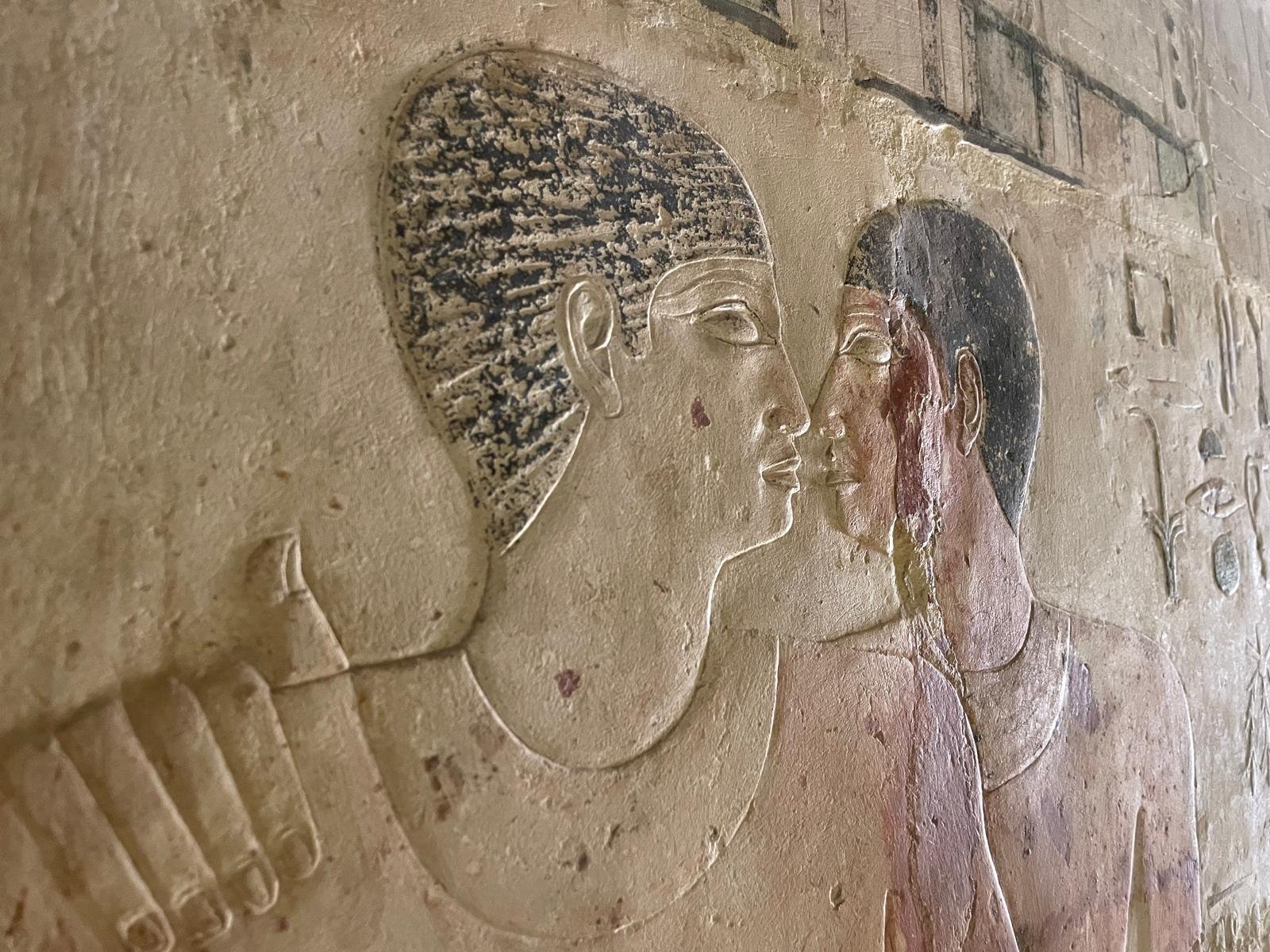Your guide to SEX in Ancient Egypt
We can’t wait to delve into the mystery of ancient Egypt with you on May 26th at Isis & Osiris. There were many reasons we were drawn to this theme - its wild imagination & creativity, in all art forms; its spirituality & reverence; its powerful feminine pantheon (divine & mortal); its embrace of the alternative… but especially its embrace and devotion to the erotic. Here are some scintillating facts about all things sex in this wondrous land.
Masturbation made the world.
One of the most powerful creation myths is that of god Atum, who self-created and separated from the chaos ocean Nun, rising out of it on a pyramidal island called benben. The god then proceeded to masturbate, collect the sacred, life-giving seed in his mouth, and spew forth the world as we know it.
In this process, Atum also began to fragment into dualities and dichotomies the world consists of, the first and foremost of which was the separation into masculine and feminine, as his hand is said to have turned into the Goddess Hathor, a primordial symbol of femininity, during his act of creation.
This myth reflects 2 of the core Ancient Egyptian beliefs:
Egyptians viewed the female as an equal participant in the creation and persistence of the world. Women, this, held equal rights throughout Egyptian society
An erect penis and its discharges symbolise the triumph of life over barrenness, and creative power. If one's penis is erect, they can create, they are alive
2. Erections guarantee life over death
Osiris, the “Mighty” or “Potent One”, is the life-giving masculine force of fertility, virility and semen. His sister and wife is Isis, whose Egyptian name Iset literally means “Throne”. Her ancient knot-like symbol ‘tyet’ was associated both with life and menstrual blood, and is thought by many Egyptologists to represent a womb into which Osiris’ inseminating power is “seated”.
The myth of the murder and resurrection of Osiris is a cornerstone in the Ancient Egyptian worldview and belief in the afterlife. When Osiris is murdered and ripped apart by his brother Seth, Isis goes on a quest to retrieve him. In the process of reviving Osiris, Isis, with her sister Nephthys’ help, makes a mummy out of him, strokes him with all her might and magic. Osiris is temporarily resurrected, the first sign of which is his penis becoming erect, and Isis copulates with him in the form of a bird, conceiving Horus. Osiris is then the first to pass the judgement, first to be declared Right of Voice, and this becomes a god of afterlife, the new “Lord of Eternity”, able to judge all others after him. So just as the first god Atum creates the world from watery chaos by rubbing one out, and then dissolves into successive pairs of deities, Osiris is reassembled from his scattered parts and pieces, and then returned to this state of primordial unity, to the watery netherworld, by his sister-wife giving him one last climax. Osiris’s erect penis is central in the guarantee that life triumphs over death.
3. On barrenness and birth
Isis’s sister Nephthys was a goddess of pathways, associated with childbirths, nursing and burials; thus, she represents a divine midwife, a woman who doesn’t give birth herself, but aids with one. She is thought to surround the soul of the newly dead with a cocoon of her hair, thus enabling it to incubate and be born into eternal life.
In some myths, her husband was Seth, the god of ‘otherness’: deserts, storms, foreigners, wars, red-haired people, homosexuality, miscarriages and abortions. Being himself sterile, he thus represents the kind of “barren” power that’s the exact opposite of his fertile, inseminating brother Osiris; namely, the one which empties the womb, by cutting out its content if need be (in fact, he himself was born by ripping himself out of the side of his mother).
That’s bloody, messy and potentially very dangerous, but ultimately necessary to give birth and complete this process of cosmic procreation.
4. The Ancient Egyptians embraced homo/bisexuality
The clearest evidence that bisexuality was acceptable in ancient Egypt may be the tomb of Niankhkhnum and Khnumhotep, two men laid to rest in the necropolis of Saqqara (where our team visited on our trip to Egypt). Hieroglyphics indicate that the men were married with children but also show them in intimate embrace. The two men apparently worked as overseers to manicurists and hardressers in the palace of King Nuiserre. There is some scholarly debate as to whether the men were brothers, but virtually all depictions of the pair show a commitment that looks far more than fraternal.
Join us on May 26th for a night of magic and sensual exploration at Isis & Osiris!




